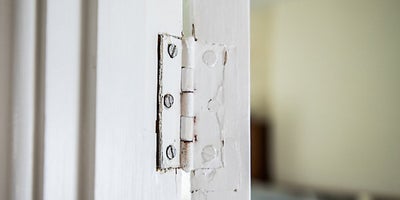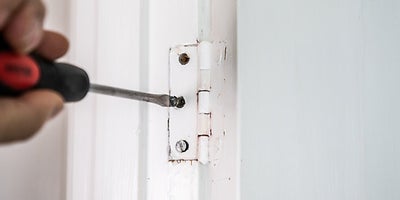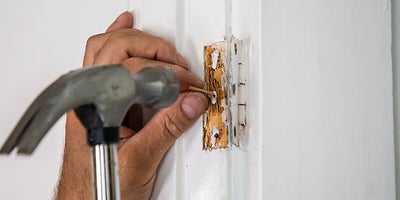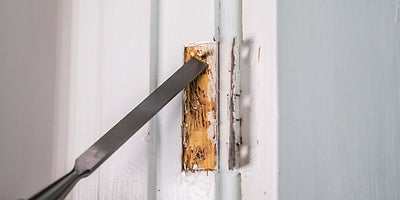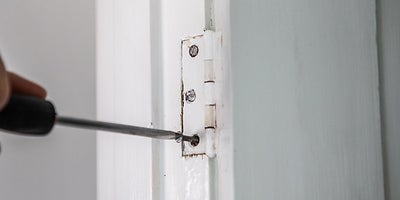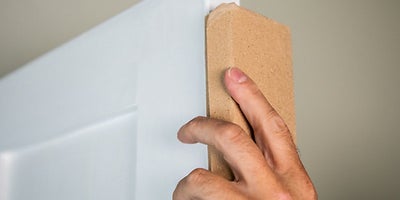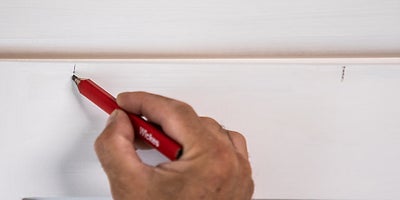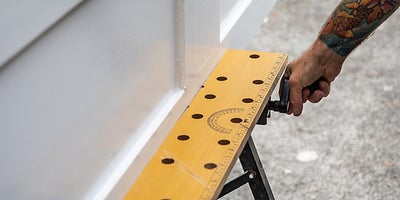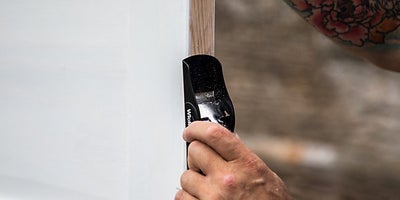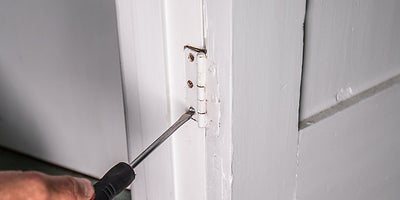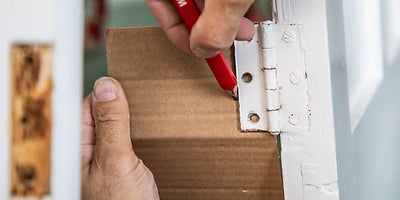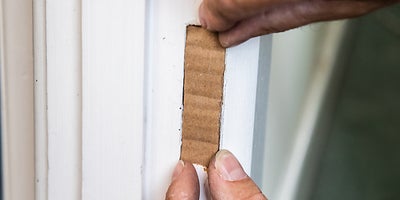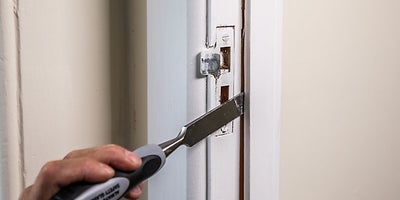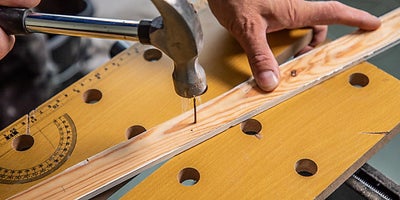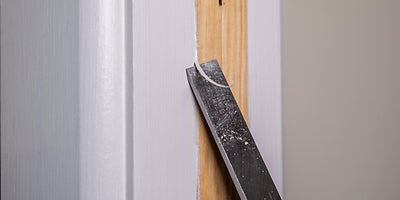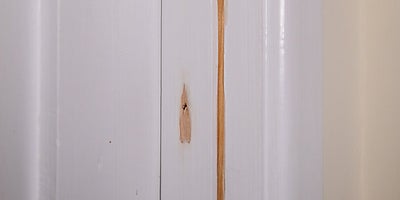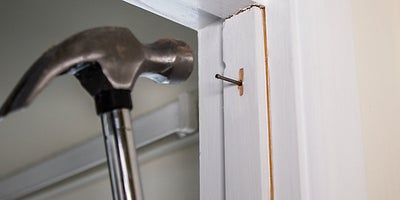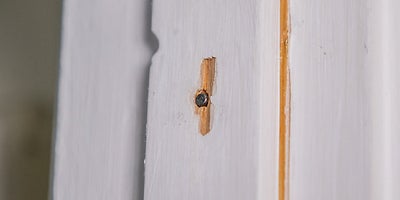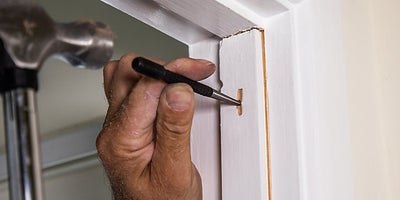How to fix door problems
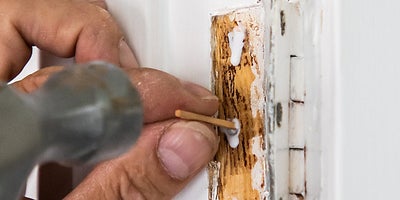
TOOLS
MATERIALS
SAFETY
Planning & preparation
- Door problems can arise for many reasons, but luckily they tend to be quite easy to fix. Here we will show you how to fix loose hinges, ease a sticking door, pack out a hinge and move a doorstop
- Start by identifying the area of the door that is causing the problems and ensure you have the right tools and materials for the job
- Seek professional help if a rated fire door is causing problems. Do not plane the edges as these may include fire door strips and seals for your protection in the event of a fire in the home
- If your door sticks in the lining or frame or rubs on the floor, it tends to be because one or more hinges are loose, or because the door has swollen in damp conditions. Always check the hinges first, as it may not be necessary to alter the door
- If a door is only slightly sticking and the weather is unusually wet or humid, consider waiting to see if the door eases once conditions improve
- If a door rattles against the doorstop in a draught, or springs open when closed, the doorstop can easily be repositioned forwards (rattling) or backwards (springing open) to solve these problems
- If a door is catching on the hinged edge, this can sometimes be fixed by placing cardboard between the hinges and the doorframe. You may need to plane the other edge of the door afterwards
- A similar packing process can be used to slightly adjust the position of a strike plate that isn’t engaging with the door latch
- Squeaky or stiff hinges can usually be fixed with a quick squirt of an aerosol lubricant. Open and close the door a few times and the squeak should disappear. Take care to wipe off any excess lubricant before it drips and causes any stains
Do it right
- If you need to plane close to a door lock or latch, it’s best to remove these first
- If you plane the edges of a painted door, always use primer and repaint afterwards. This is particularly important for external doors – even if the top and bottom edges are not usually visible
- A small adjustment to the strike plate with a metal file that enables the door latch to engage properly is an alternative fix when a door is springing open
- An aerosol lubricant can also be used to ease a door lock that is hard to turn, or a sticking latch mechanism. Again, take care to wipe off any excess before it drips
Staying safe
- When using a chisel, wear safety glasses or goggles and be sure to chisel away from the body
- Doors can be heavy so it’s best to ask for help when you are taking a door off its hinges or rehanging one
